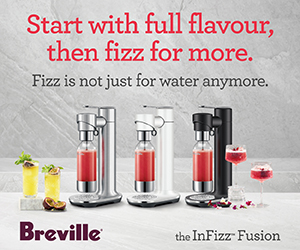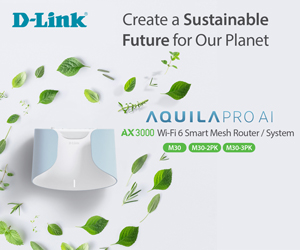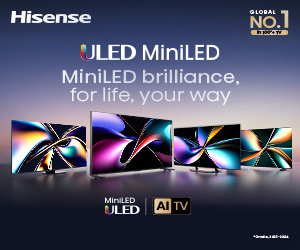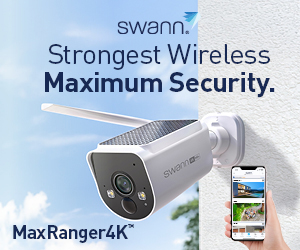Google’s ‘Switch to Android’ helps you escape iPhones walled garden and makes iPhone and/or Android-to-Android upgrades easy.
One of the biggest impediments to getting a new phone is the fear of losing all your email, phone logs, contacts, photos, documents, music, and Apps. Another is that it seems daunting, especially for those who are not computer savvy. Google’s Switch to Android or Android to Android (the subject of another guide) makes it easy.
CyberShack recently upgraded two iPhone escapes to new Android phones. The iPhone SE transferred incredibly easily with only one easy-to-fix photo issue, while the other iPhone 6 did not. Why?

We will go into details later, but in summary:
- The iPhone SE owner had their Apple ID, password, and iCloud/iTunes backup password (they are different, and you must have both). The ‘escape’ was flawless—everything copied over nicely, including substitute Android App equivalents. But there were 60GB of photos in iCloud (and they were paying dearly for that storage), and there was not enough space on the iPhone to download them back to it.
Why? You can only copy photos/videos stored on the phone, not in the iCloud. That issue was easily solved using a PC with the iCloud App installed to copy the photos to the hard disk and then to the Android’s DCIM (photos) folder.
After copying, all that was needed was to re-enter logins and passwords to Apps (for security reasons, these never copy).
- The iPhone 6 owner did not have their iCloud/iTunes backup password, which means no access to the encrypted contacts, phone logs, music, etc., stored in the cloud. While there are ways to get around that, well, almost, setting a new password only allows you to back up what is currently on your iPhone. You can then use that to ‘escape’, but you lose access to any old data in the cloud. The story’s moral is that you must have your iCloud/iTunes backup password or risk losing everything. And the Lightning connector was dodgy and frequently dropped out, forcing the process to restart.
What you need to escape iPhones walled garden
While you can use Wi-Fi to transfer, you only get some data stored on the device – contacts, photos, and Calendar. You get everything if you use a Lightning to USB-C cable like the Zeus-X Pro 6-in-1 universal cable – $44, including delivery from Amazon AU.


Google Switch to Android – what you get
| Data type | Cable | Wi-Fi |
| Contacts | Yes | Yes |
| Photos and videos | ||
| 1) Stored on device | Yes | Yes |
| 2) Stored in iCloud * (needs backup password) | Yes | |
| Messages | Yes | |
| SMS, MMS and iMessage text and media WhatsApp message history and media | Yes | |
| Apps (At no cost in Google Play only) | Yes | |
| Music (Any DRM-free, non-iTunes, on your device) | Yes | |
| Calendar | Yes | Yes |
| Call logs | Yes | |
| Notes | Yes | |
| Documents | Yes |
Samsung Smart Switch data transfer (Samsung App, alternative to Google)
- Personal content: Contacts, Schedule, Messages, Notes, Call history, and Safari Bookmarks.
- App data: Photos, Music/videos (DRM-free content only), Documents, Recommended apps, and Voice Memos.
Smart Switch won’t copy:
- Contacts: Contacts saved on the SIM card, social networks (Facebook, Twitter, etc.), Google accounts, and work email accounts.
- Calendar: Appointments synced with external accounts, such as Google, and calendar stickers.
- App data: Data saved in private storage cannot be backed up.
- Email: Social Hub and Premium (Push email) accounts are excluded.
We identified some other issues with using Samsung’s Smart Switch.
Steps to Escape iPhones walled garden.
- Make sure you have a list of all App logins and passwords. If you have lost these, use the ‘Lost Password’ option in each App.
- Fully charge your iPhone and Android phone.
- Make a full iPhone backup to iCloud (just in case). Settings>Apple ID>iCloud.
- Download all iCloud photos to the iPhone (if there is insufficient space, you can download to a PC – see later)
- Start the original Android setup process from a new (or factory reset) Android phone. Stop at the screen that asks to ‘copy from an old device’. Your Samsung phone can already be set up—open the Smart Switch App.
- Connect (via cable if you want everything).
- The iPhone will ask to trust the Android phone.
- It will then ask what you want to be copied – select all categories. It will then ask for the iCloud or iTunes Backup password.
- The copy process time depends on the amount of data and can take a few minutes or much longer.
After copying:
- Check that your photos, contacts, etc., are on Android.
- Open each Android equivalent iPhone App and enter login and passwords. Use the free LastPass password manager (Windows, Mac, Linux, Android, or iOS) or Google’s inbuilt (Android only) to record and remember your logins and passwords.
- If you are happy, turn off iPhone iMessage (Settings>Messages>Off) before you swap the SIM card to the Android phone.
- Enjoy your escape from the Walled Garden.

What about email?
Apple iPhone does not provide email services – it provides an email client that can access iCloud, Google Gmail, Microsoft Outlook, Yahoo, etc. That means the email is stored elsewhere. By default, Android uses Gmail, which can easily access your existing IMAP or POP email address without losing functionality or data. The good thing is that Gmail also manages the calendar, contacts, etc.
Enter your email address and password into Gmail (or Outlook), which should bring up all your mail.
How to retrieve iCloud photos if you can’t download them to the iPhone before copying
Using a Windows PC/Laptop, download the iCloud App for Windows.

You can then make a full backup to the PC, which includes your JPG photos (in full resolution). These can then be uploaded to the Android DCIM Folder using the 6-in-1 cable and Windows Explorer (just grant permission for Windows to access Android).
Once you have everything, cancel your iCloud subscription and save some money.
FAQs – Escape iPhones walled garden
Q: Can I do this with an iPad and Android tablet?
A: It is the same principle if you have an Android tablet.
Q: Will my Apple Watch data transfer?
No. If you have an Apple Watch, you cannot use it on Android – another example of the walled garden. It is the same with Apple-developed Apps. The good news is that there are usually Android equivalents – search Google for the iPhone App name and the Android equivalent.
On that point, if you are rusted on to Apple services like Apple TV+, Apple Arcade, Apple Music, and Apple Fitness+, you can easily find Android equivalent versions, but some things only work with iPhone.
Q: Can I use Apple Music on Android?
Yes. Download the Google Play App and keep paying for the subscription. The Catch-22 is that you must use Chromecast to stream music from Apple Music on Android. We suggest you switch to Spotify, which supports Bluetooth, Wi-Fi, Android Auto, and more.
Q: Will I have to pay for new Android Apps?
Android has most, if not all, of the free Apps you use on iPhone. During the copy process, it will substitute these for Apple Apps, and you can log in with your login and password and not lose data. Paid Apps can be problematic, as Apple usually manages payment, not the App developer. If a paid equivalent App exists in Android, it should download during copying, but you may be asked to subscribe via the App. Just make sure you cancel the Apple subscription.
Can I transfer Facebook, FB Messenger, Instagram, and WhatsApp?
Switch to Android will copy the Apps, and all you need to do is log in, as all data is stored in the Meta Cloud.
Q: What about privacy and virus/malware?
A: Apple markets its privacy and virus/malware-free iOS environment. Its walled garden is more secure, but it knows everything you do and uses it to advertise to you and keep you in the Apple ‘tent’. iOS is a prime target for malware writers, and it can and does sneak in via poisoned Apple Store Apps. Apple will not allow anti-virus/malware programs to run on iOS – it should. Apple conversations and emails can be intercepted by law enforcement. What Apple (and Android) have a hard time controlling is the data exfiltrated by App Store Apps. There is a long and objective Apple/Android security read here.
Android has a privacy dashboard and sandbox (like Apple). It is inherently secure, but often, users allow permissions they should not. We recommend the paid versions of Malwarebytes, Norton, or TrendMicro to keep Android users completely safe. Remember that Google Android and its Apps are free services, and you pay by providing anonymised data. You can limit this via simple and easy-to-find settings in your Android profile. It also suffers from poisoned Apps, and the Google Play Store immediately deletes them on discovery. Like iOS, communication can be accessed by law enforcement.
I would be more concerned about the massive amounts of personal data sucked up by Facebook (et al.), TikTok, Zoom, and many other free apps. If the product is free, the product is you!
Bottom line: Apple has a slight edge here, but I know both Apple and Android users who have malware and privacy breaches. It is getting rarer with Android and later or iOS 18 or later.
Q: Why bother switching?
A: If you are happy with Apple, then don’t. Without denigrating Apple’s successful walled garden, it is all about how much money it can extract from iPhone users. When you escape iPhone’s Walled Garden to Android, you will find a vast choice of Apps (over 3.5 million versus 1.6 million in the Apple Store and many free or lower cost), more service providers, better Windows interoperability, and above all, a vast choice of phones from $200 to $2500. Android hardware meets or exceeds Apple’s. For example, the best camera phones are Android. Apple makes switching hard, but Android makes it easy, from Apple to Android and vice versa.
Q: Why does my Android smartphone battery last longer and charge faster? Do I need a power bank to get through the day?
A: Many Android phones have 5000mAh batteries and up to 67W fast charge in under an hour. An iPhone 14 has a 3,279mAh battery and a maximum of 20W charging, taking well over an hour.
Q: Where can I get help if I stuff it up?
A: First, you can’t stuff it up as everything remains on the iPhone, and you can use that until you solve any issues. Second, approved retailers like Harvey Norman, JB Hi-Fi, Good Guys, Bing Lee, Officeworks, etc., can recommend people to help. It costs a bit more to come to your home. Once you move to Android, Google’s Switch program makes it easy and flawless for future phone upgrades.
Q: What are the best Android phones?
A: It is all about your needs. We publish a quarterly updated Best Android phones 11/2024 (June update coming soon). Some excellent phones in the $500-1000 bracket offer similar features to the Apple iPhone SE and 14 standard models. The $1000-2500 bracket includes Flip and Foldables that meet or exceed the iPhone 16.
It is all about choice, buying what you need and can afford, and not being locked in. Most switchers buy a lower-cost phone outright and access far lower-cost mobile data and phone plans from Woolworths, Aldi, Coles, Boost, etc., that use the Telstra and Optus networks.
Android has a global market share of over 72%, and iOS has 28%. Android is where all the action is. The best brands are OPPO, Motorola, and Google Pixel. Samsung has excellent gear but is building its own One UI Android ecosystem, which can make it harder to leave the brand.
Here is a brief video from Motorola (ignore the reference to Wi-Fi and QR codes and use a cable)









Comments